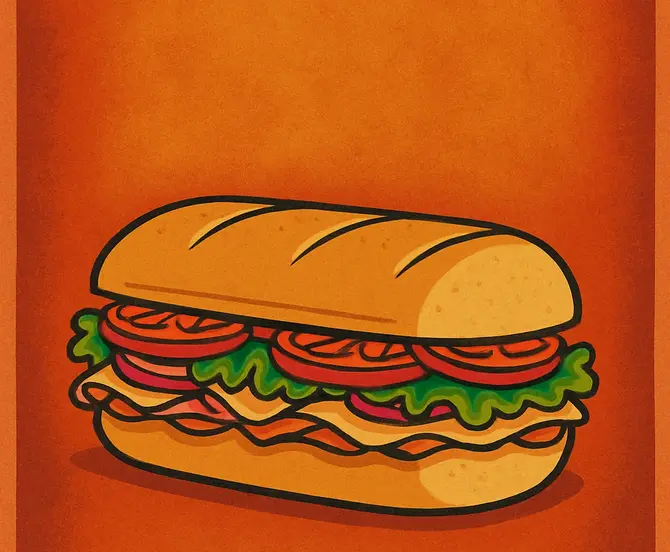The Wawa Revolution: Convenience Stores That Outperform Fast Food
At 10 AM on a Monday, Wawa stores across America are bustling with customers ordering fresh-made hoagies, custom coffee drinks, and limited-time offerings like the famous “Gobbler” sandwich. This isn’t your typical gas station experience—it’s a food service revolution that’s beating fast food companies at their own game.
Table of Contents
The Numbers Don’t Lie: Wawa’s Dominance
Revenue and Growth Metrics
Wawa’s performance over the past decade tells a compelling story. Revenue has more than doubled while the workforce grew by nearly 90%. The company now generates $18.8 billion in annual revenue across nearly 1,200 stores, serving 1 billion customers annually with consistent 3% annual customer traffic growth since 2015.
Market Share Gains
The most telling statistic reveals Wawa’s competitive advantage: customers who shop at both Wawa and quick service chains like Burger King, Wendy’s, or Starbucks have been shopping more frequently with Wawa since 2023. Breakfast traffic increased by 5% at food-forward convenience stores like Wawa, while traditional QSRs only increased by 1% in August 2025.
The Secret Sauce: What Makes Wawa Different
The “Best Five Minutes” Philosophy
“We have five minutes with our customers. Make it the best five minutes of their day.” This simple philosophy drives everything Wawa does, from employee training to product development, creating an experience that customers remember and return for.
Employee Ownership Culture
Wawa employees own nearly 40% of the company, creating a unique ownership culture that translates into higher commitment levels from staff. This ownership model fosters personal relationships with regular customers, where employees know customers by name and family, creating a culture-driven approach to service excellence that’s difficult to replicate.
Fresh Food Focus
Unlike traditional convenience stores, Wawa eliminated third-party brands like Dunkin’ or Pizza Hut, going fully Wawa-branded. The company offers 15 limited-time items annually, nine coffee variations, fresh-made hoagies and subs, and extensive customization options that keep customers coming back for new experiences.
The Food Service Revolution
From Gas Station to Food Destination
Wawa’s transformation represents a fundamental shift in the convenience store industry. While traditional gas stations were known for dirty bathrooms, last-resort food options, poor customer service, and limited fresh offerings, Wawa flipped every negative into a positive. The company created clean, modern facilities with high-quality fresh food, exceptional customer service, and extensive customization options that rival any fast food chain.
Innovation Center: The Engine of Growth
Wawa’s Innovation Center continuously tests new products, developing new hoagie and sub concepts, sauce and beverage innovations, coffee and smoothie variations, and limited-time seasonal offerings that keep the menu fresh and exciting for customers.
Competitive Advantages Over Fast Food
Broader Menu Innovation
Wawa’s diverse menu allows innovation in ways that traditional QSRs can’t match. While McDonald’s focuses on core items, Wawa can experiment with seasonal offerings, regional specialties, and unique combinations that keep customers engaged and coming back for new experiences.
Superior Convenience
Unlike fast food chains that require separate trips, Wawa combines fuel stops, food service, coffee breaks, snack purchases, and ATM access all in one location. This convenience factor eliminates the need for multiple stops and creates a one-stop solution for busy customers.
Customization and Speed
Wawa’s system allows for extensive customization while maintaining speed, something that challenges traditional fast food operations. Customers can get exactly what they want, how they want it, without sacrificing the convenience of quick service.
Why Wawa Wins Where Fast Food Falters
Wawa’s edge isn’t just convenience—it’s evolution. With customization, innovation, and unmatched accessibility, it’s redefining what modern quick service looks like. As traditional fast food chains struggle to adapt, Wawa is quietly capturing the future of on-the-go dining.
Discover Fast-Growth Retail & Food Jobs →The Expansion Strategy: Growing Smart
Methodical Growth Approach
Wawa’s expansion strategy focuses on quality over quantity, with a goal of 1,700 locations by 2030. The company currently operates nearly 1,200 stores, representing a 50% increase in store count over the past decade and a $4 billion revenue increase in recent years.
Geographic Expansion Success
Wawa’s Florida expansion has been particularly successful since debuting in 2012. The state now holds more Wawa locations than any other, with the company becoming synonymous with Florida. The Midwest expansion has also shown strong performance, with new market stores performing almost as well as core market stores, creating palpable opening excitement and customer lines that demonstrate the brand’s appeal beyond its traditional East Coast base.
Challenges and Risks
Maintaining Quality During Expansion
The biggest challenge facing Wawa is maintaining the customer experience that built its reputation while scaling rapidly. As the company expands from 6 to 12 states, ensuring consistent quality and service across all locations becomes increasingly difficult.
Supply Chain Vulnerabilities
Unlike competitor Casey’s, which owns its distribution centers and transportation fleet, Wawa relies on third-party suppliers, creating operational vulnerabilities that could impact food quality and availability during expansion.
Regional Competition
As Wawa expands, it faces established regional favorites like United Dairy Farmers in Indiana, Twice Daily in Tennessee, and Buc-ee’s in the South. These regional players have deep local roots and loyal customer bases that could challenge Wawa’s expansion efforts.
Learning from Failures
Wawa has had notable misses, including a pizza launch in 2023 that’s still receiving negative reviews and a drive-thru concept in 2020 that offered limited customization and no inside access. However, the company views these failures as learning opportunities, with the CEO stating, “If we don’t have misses, we’re not trying hard enough.”
The Future of Convenience vs. Fast Food
Industry Transformation
“You’re going to see a continued expansion of high quality food service in the convenience industry. And if anything, the quick service restaurants better watch out because if you can get better food faster at a gas station, that kind of changes everything.”
Value Proposition Evolution
Wawa’s formula for success combines better value than traditional fast food with higher quality fresh ingredients, competitive pricing, and superior service through employee ownership. This combination creates a compelling value proposition that’s difficult for competitors to match.
The Cult Following Phenomenon
What Creates Loyalty
Wawa’s “cult-like following” stems from personal connections between employees and customers, consistent quality across all locations, innovation through limited-time offerings, a community feel in each store, and employee ownership that creates genuine care for customers. As one customer puts it, “I love Wawa. I don’t even get gas, I get food. I love their products, their sandwiches, their coffee.”
FAQ Section
Q: How is Wawa different from other convenience stores?
A: Wawa focuses on fresh, high-quality food with extensive customization options, employee ownership culture, and exceptional customer service that creates personal relationships with customers.
Q: Why is Wawa beating fast food chains?
A: Wawa combines convenience (fuel, food, coffee) with superior food quality, customization options, and a broader menu that allows for more innovation than traditional QSRs.
Q: What are Wawa’s biggest challenges?
A: Maintaining quality during rapid expansion, supply chain vulnerabilities, regional competition, and learning from product failures while continuing to innovate.
Q: How does employee ownership affect Wawa’s success?
A: Employee ownership creates higher commitment levels, personal customer relationships, and a culture-driven approach to service excellence that’s difficult for competitors to replicate.
The Bottom Line: A New Industry Standard
Wawa’s success represents more than just a convenience store chain winning—it’s a fundamental shift in how Americans think about food service. By combining convenience, quality, and community, Wawa has created a model that traditional fast food chains are struggling to match.
The company’s focus on employee ownership, fresh food innovation, and customer relationships has built a “cult-like following” that’s driving market share gains and revenue growth. As Wawa continues its aggressive expansion toward 1,700 locations by 2030, it’s setting a new standard for what convenience stores can achieve.
The message to fast food chains is clear: adapt or lose market share to convenience stores that offer better food, better service, and better value—all in one convenient location.




